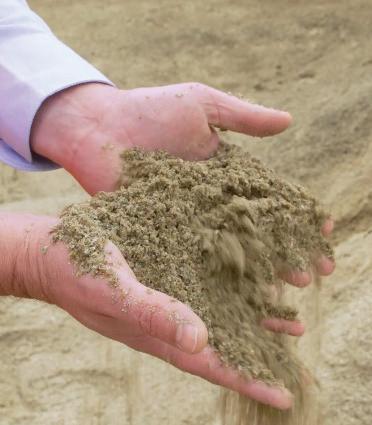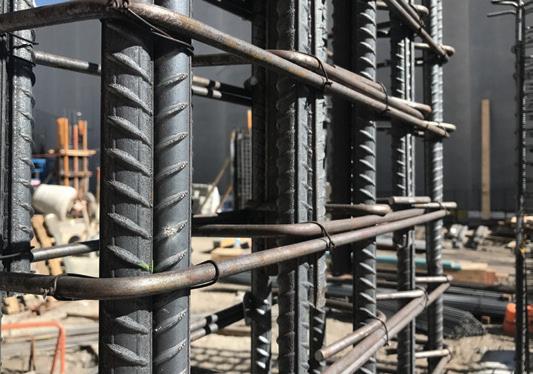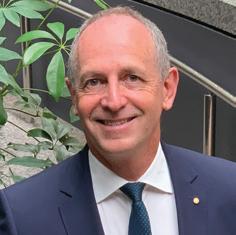
4 minute read
SUSTAINABILITY
Roads made of glass bottles and crushed bricks will soon be business as usual, with the Victorian Government’s Recycled First policy dialling up the use of recycled and reused materials in construction.
USING RECYCLED MATERIALS IN MAJOR CONSTRUCTION PROJECTS
Advertisement

Victoria’s transport boom – with the delivery of close to 120 rail and road projects – came at a time when the state’s recycling system needed urgent reform.
The Andrews Labor Government responded with its circular economy strategy, Recycling Victoria, a ten-year plan to overhaul the state’s recycling sector.
A key part of the Recycling Victoria plan is to keep waste out of landfill and drive innovation in sustainability.
That’s where Victoria’s Big Build comes in, presenting an opportunity to optimise the use of recycled and reused materials on government projects.
The introduction of the Recycled First policy in March this year supports that commitment.
We are at a point where we must move from a “make-usedispose” model to a “make-use–reuse-repair-recycle” model.
The Recycled First policy will enable transport infrastructure projects to drive that change. Increasing demand for recycled resources will in turn create new prospects for local industry and technology development.
Companies interested in delivering major transport infrastructure projects will be required to demonstrate how they will optimise the use of Victorian recycled and reused materials that meet existing standards and specifications.
This will see recycled aggregates, glass, plastic, timber, steel, ballast, crushed brick, crumb rubber and reclaimed asphalt pavement take precedence over virgin materials.
The Victorian Government is working with construction and industry partners to identify and remove barriers to the use of recycled content.
Part of this is about dispelling myths, including the assumption recycled materials are more expensive and do not perform as well as virgin materials.
In many cases this is untrue, with recycled content often performing as well or better than virgin materials. Extra costs can often be mitigated by sourcing local content to reduce travel expenses or through economy of scale.
Ultimately, we need a comprehensive picture of the current state of the recyclables market so we can build capacity and generate data to improve acceptance and inform future project procurement.
Supporting and building a competitive and sustainable market will ensure recycled content is cost-competitive.
FROM AD HOC TO ORDINARY
The use of some recycled materials is already evident in Victoria’s transport projects, including the $1.8 billion Western Roads Upgrade, being delivered by Major Road Projects Victoria as a public-private partnership with Netflow.
More than 190 million recycled glass bottles are being used to build this project, including on Dohertys and Leakes Roads in Truganina, and Dunnings and Palmers Roads in Point Cook.
This material, together with asphalt and other recycled demolition material, was also used to build extra lanes along 24km of the Tullamarine Freeway. It was also used on sections of the Monash Freeway and M80 Ring Road.
Up to 300,000 tonnes of recycled asphalt is also being used on the Western Road Upgrade to improve Palmers and Leakes Roads in Truganina, and Dohertys Road in Laverton North. Workers are also resurfacing 37 arterial roads in Melbourne’s west using recycled asphalt.
Victoria’s Big Build has also been reusing materials created by its own projects, with 14,000 tonnes of soil excavated from the Metro Tunnel site in Parkville used in pavement layers on roads in Point Cook.
This material weighs as much as 226 E-class Melbourne trams and would have otherwise gone to landfill.
The Chandler Highway Upgrade also used up to 40,000 tonnes of dirt excavated from the Queens Place skyscraper development in Melbourne’s CBD.
The Recycled First policy will transform this ad hoc approach into a uniform process that captures data and lessons learnt.
DRIVING INNOVATION
There is plenty to be learnt from research already underway, with the Victorian Government collaborating with construction and industry partners to drive innovation.
In an Australian-first trial into how crumbed rubber performs over time, a busy road in East Bentleigh has been paved using the equivalent of 1,600 old tyres.
Researchers have begun testing the use of crumbed rubber on a kilometre and a half section of East Boundary Road, with laboratory and field tests to be conducted over the next two years.
Four different asphalt mixes that incorporate crumbed rubber and two asphalt control sections were laid over several nights on the southbound carriageway between Centre Road and South Road.
The Victorian Government, Tyre Stewardship Australia and the Australian Road Research Board (ARRB) are conducting a $1 million study, which aims to incorporate more discarded tyres into the circular economy.
Australia generates the equivalent of 56 million car tyres every year, and it is estimated a third of these tyres end up in landfill or stockpiles. Only ten per cent of discarded tyres are currently domestically recycled.
Crumbed rubber in spray seals is already used to build roads in country Victoria and overseas, with the Department of Transport committed to reuse a million tyres in roadworks on regional roads every year until 2025.
This study aims to boost the opportunity to use crumbed rubber on metropolitan roads, by exposing it to high traffic volumes and testing the surface’s durability over time. A final report is due by mid-2022.
We’re determined to work closely with the construction industry to make recycled and reused materials the first choice where possible and pave a greener future for Victoria.










